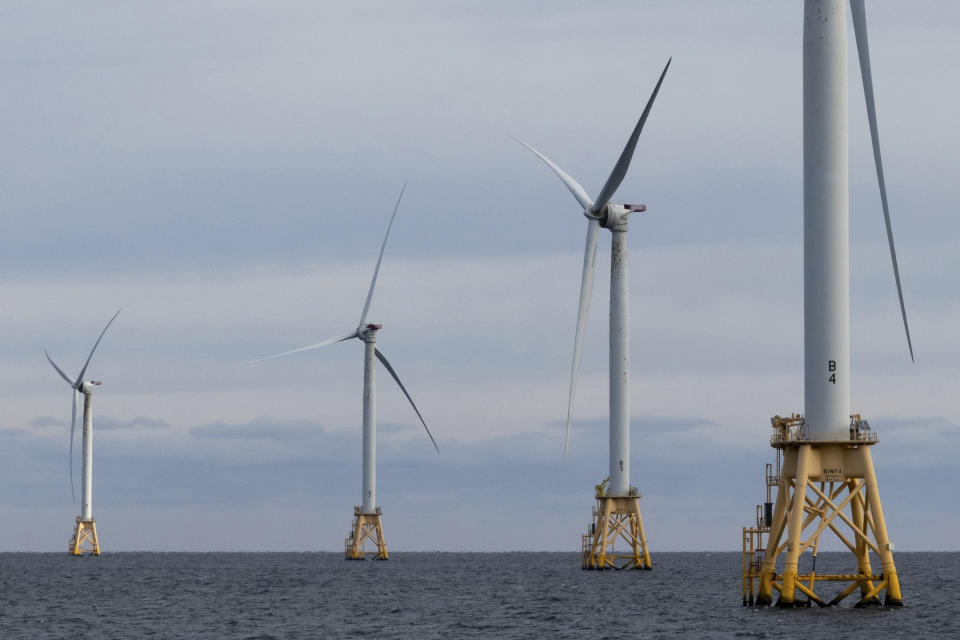California congressman urges closer consultation with tribes on offshore wind

A congressman who represents California’s north coast has sent a letter to federal regulators asking that they “urgently place” a senior official in the state to respond to tribal needs as wind power is developed offshore.
U.S. Rep. Jared Huffman sent the letter as the U.S. offshore wind industry begins to take shape and as tribal communities in California and Oregon express frustration with what they say is a lack of consultation on proposals that affect culturally significant waters and land.
“Regional tribal nations are asking for the opportunity to help influence the way in which offshore wind is executed off the shores of the West Coast,” said Heidi Moore-Guynup, director of tribal and government affairs for Blue Lake Rancheria, in an interview Friday. “They’ve been the stewards of the waterways, bays and oceans since time immemorial and want to ensure that the health of such waterways and the species that live among them is preserved.”
The Bureau of Ocean Energy Management has its Pacific office in Camarillo, California. It is responsible for the development of offshore energy and mineral resources for the entire region.
Huffman said tribes need someone dedicated to working solely with them, given the scale of the offshore wind planned and the level of consultation needed. “They just feel like no one is home in California,” he said.
BOEM said Monday that while it does not publicly comment on congressional correspondence, it will continue to refine the way it engages with tribes. The agency said the renewable energy leasing process will be comprehensive and transparent, and incorporate indigenous knowledge and tribal perspectives.
The U.S. held the first-ever auction of leases in December 2022 to develop commercial-scale floating wind farms in the deep waters off the West Coast. The auction featured five lease areas — two in northern California off Humboldt County and three in central California near Morro Bay.
The Interior Department has approved eight commercial-scale offshore wind projects in the U.S. They are the first such projects in the nation.
Interior Secretary Deb Haaland visited Humboldt Bay in March and met with tribal leaders. Many of the 13 tribes represented in the room, including Blue Lake Rancheria, said the engagement with BOEM has been inadequate.
“I want to make sure we do this right, so we can include the tribes in a very meaningful way and not as some sort of ministerial consultation that just checks the box," Huffman said in an interview.
The letter, sent Friday, was first reported by The Associated Press. Huffman’s district includes more than two dozen federally-recognized tribes.
In California, Jacque Hostler-Carmesin said having a senior federal official to work with would be a really good first step, but it’s not enough. Hostler-Carmesin, chief executive officer of the Cher-Ae Heights Indian Community of the Trinidad Rancheria, said a government coordinating council on wind energy should be created to bring together federal, state, local and tribal governments.
“In order to have tribal chairs and tribal leaders at the table, there has to be a structure,” she said.
The tribe is currently opposed to the development of offshore wind. But that could change if tribes are truly part of the decisions, not just informed of them after the fact, Hostler-Carmesin said.
Earlier this year in Oregon, the Confederated Tribes of the Coos, Lower Umpqua, and Siuslaw Indians objected to the federal government finalizing two areas off that state’s southern coast for floating offshore wind farms. The two areas span nearly 195,000 acres (78,900 hectares), with one located 32 miles (52 kilometers) off the coast of Coos Bay, and the other 18 miles (29 kilometers) from the shore of the small city of Brookings, near the California state line.
The areas, which have been proposed for offshore wind energy auctions, have the capacity for powering more than one million homes, according to the Department of the Interior.
The federal agency said it had “robust engagement” with tribes as it finalized the areas for offshore wind in Oregon. But the Confederated Tribes of the Coos, Lower Umpqua, and Siuslaw Indians refuted this, saying they were “extremely disappointed” that areas of cultural and historic importance were identified for offshore wind.
Negotiations in other parts of the country, however, have gone well.
In Massachusetts earlier this year, the Mashpee Wampanoag Tribe entered an agreement with Vineyard Offshore, which is developing wind power off the state’s southern coast. The tribe said in a news release that “there has been a significant emphasis on collaboration” since it first began discussing the project with the company in 2016.
The agreement creates a fund for the tribe for workforce training, scholarships, language reclamation and wastewater projects. The money will also support the tribe’s efforts to engage with offshore wind projects.
A 30-day public comment period on BOEM’s environmental assessment of the Oregon proposals ends May 31.
___
Rush reported from Portland, Oregon. McDermott reported from Providence, Rhode Island.
___
The Associated Press’ climate and environmental coverage receives financial support from multiple private foundations. AP is solely responsible for all content. Find AP’s standards for working with philanthropies, a list of supporters and funded coverage areas at AP.org.
